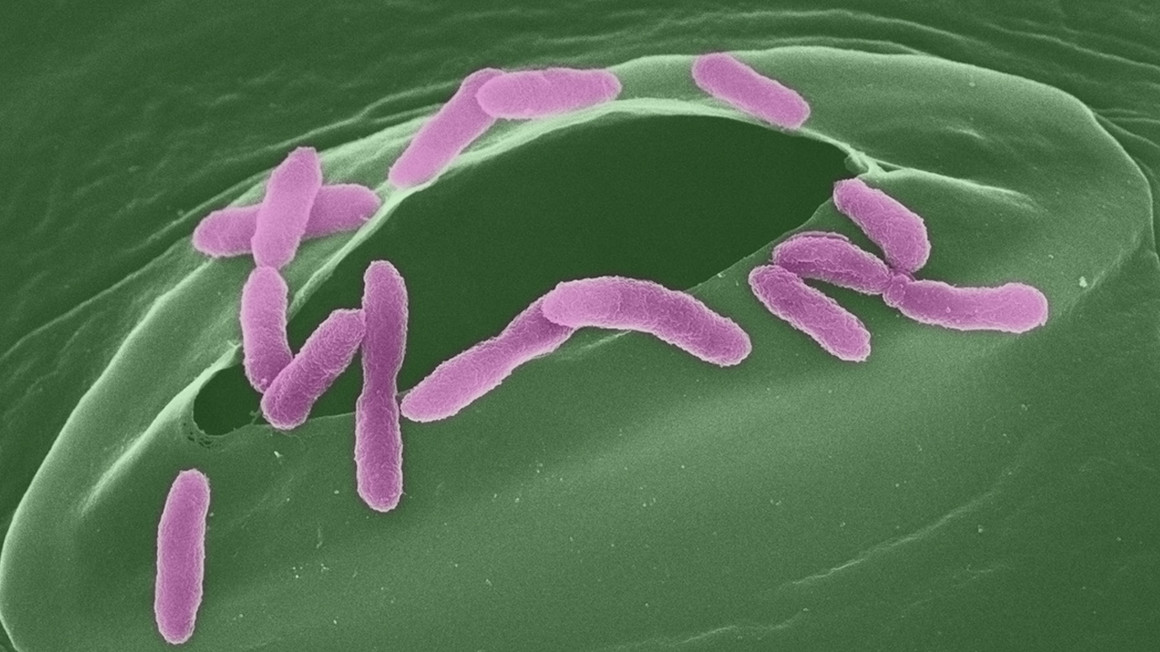Bacterial booster for the plant immune response
Benign Pseudomonas strains ensure that their pathogenic relatives do not cause any damage in plants, as researchers from Tübingen have discovered.

Pseudomonas bacteria are widespread: The microorganisms colonize human skin or intestines, soil, water, and also in or on plants and animals. And they can be both beneficial to health and cause disease. With a view to the health of plants, researchers at the Max Planck Institute for Biology in Tübingen have investigated the question of how the benign Pseudomonas strains protect themselves from their harmful relatives.
Living in harmony with pathogens
"The result of a previous study by our department raised the question of how plants can harbor pathogens and still remain healthy," explains study leader Or Shalev. "In agriculture, many methods such as using pesticides or pruning plants are used to get rid of pathogens, so it is surprising to observe that many wild plants can live in harmony with their pathogens," Shalev continues.
A team led by Shaves and Detlef Weigel investigated this unusual harmony of opposing Pseudomonas strains in more detail using the model plant Arabidopsis thaliana. The focus was on the question of what advantages the plant has when both pathogenic and so-called commensal Pseudomonas strains coexist on the leaves. Commensals are microbes that live on organisms and have either positive or neutral effects on the host.
The role of commensals
For this purpose, the researchers infected one group of plants only with commensals, another only with harmful pathogens and a third group with a mixture of benign and pathogenic Pseudomonas strains. The model plants were placed in the ground under conditions as close to natural as possible, and the transmission of the bacteria was simulated by wind and rain. One focus of the study was the effect of the commensals on their harmful relatives and how they thereby exert their plant-protective effect. With the aid of genome barcoding, the team was able to distinguish between genetically closely related representatives of the bacteria.
The result: colonization by commensal strains of Pseudomonas triggered an immune response in the plant that suppressed the growth of the harmful bacteria. "This is an unusual result because all infected bacteria were from the same genus and this immune response only specifically addressed one pathogenic lineage. In addition, the commensal consortium included a variety of commensal species, but none of them were inhibited by the plant. This is further evidence of how specific the plant's immune response was," Shalev points out.
Key for innovations in agriculture
This pathogen defense was not found in all plants. As the team reports in the journal Nature Ecology & Evolution, protection against pathogenic pseudomonads depends very much on the genetic characteristics of the plant and also on those of the bacteria that colonize it. "Another important aspect of our work was to identify and describe an existing collective protective effect. We did not identify individuals as actors, but a synergy of the collective," Shalev explains. More research is still needed to understand precisely the mechanism of coexistence between the good and harmful strains of pathogens. However, knowledge of this could be the key to innovations to reduce the use of synthetic pesticides in agriculture.
bb


